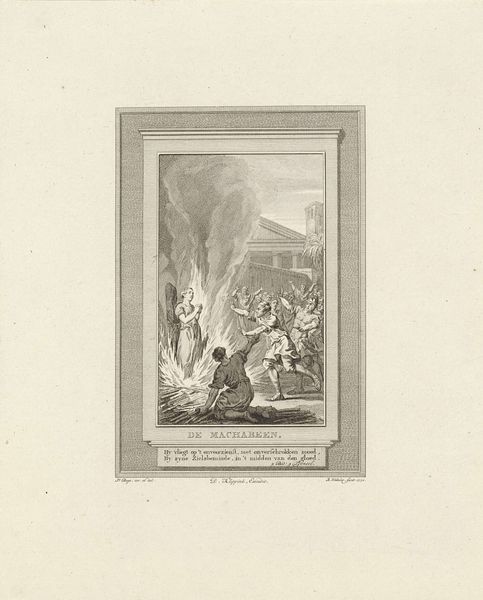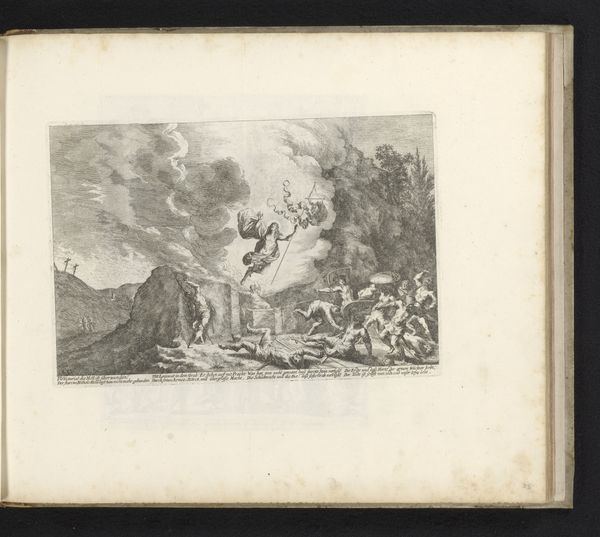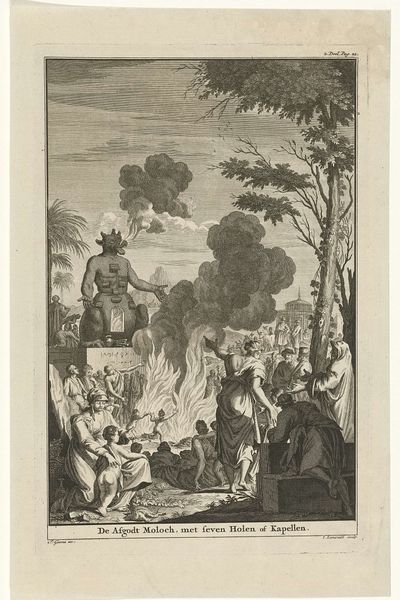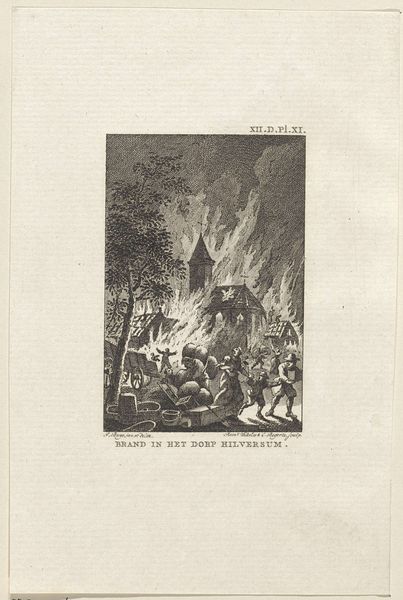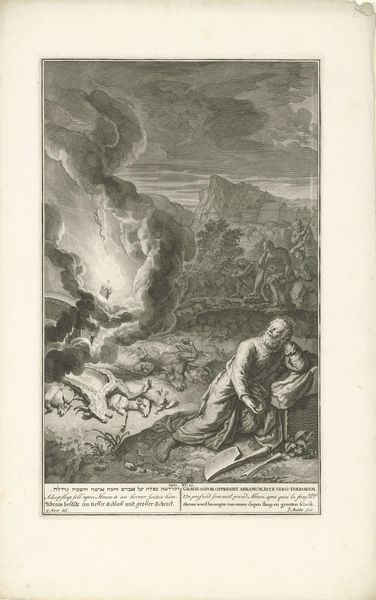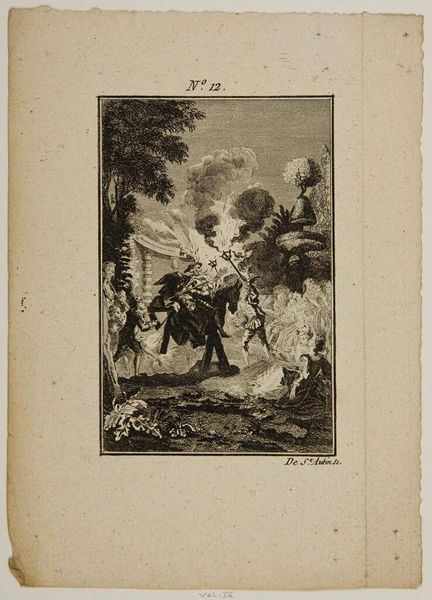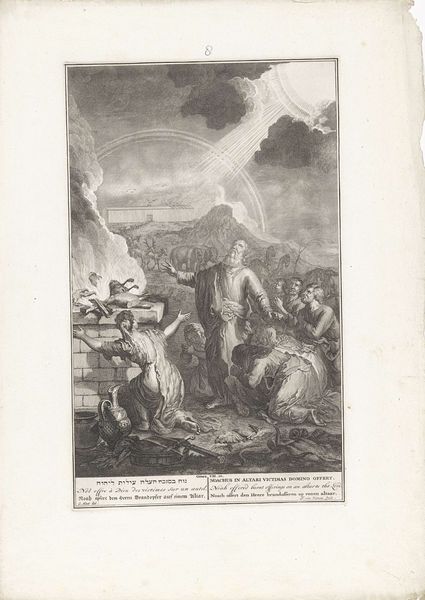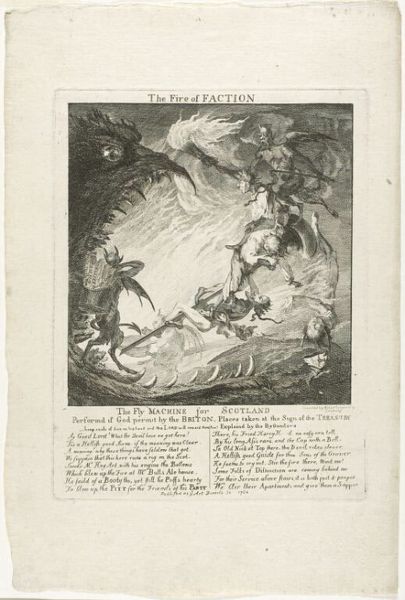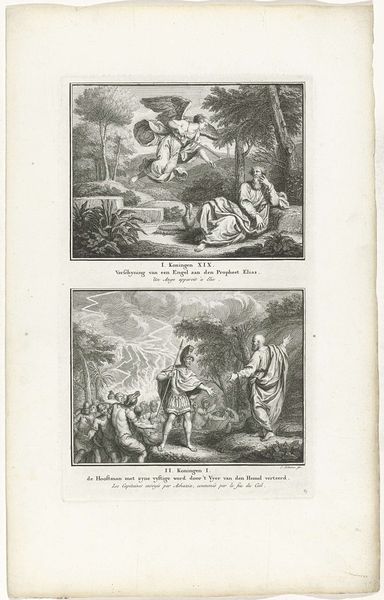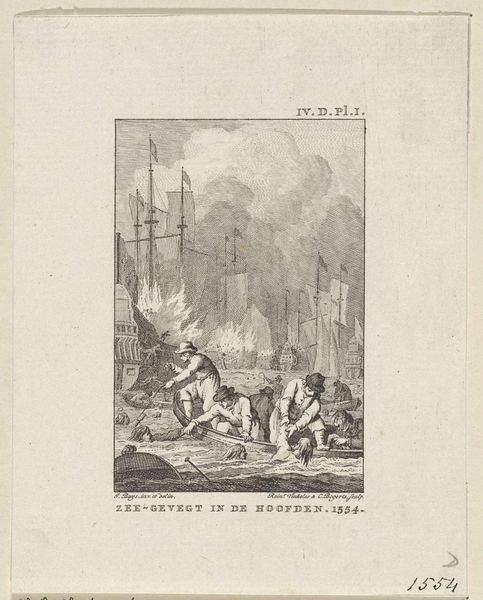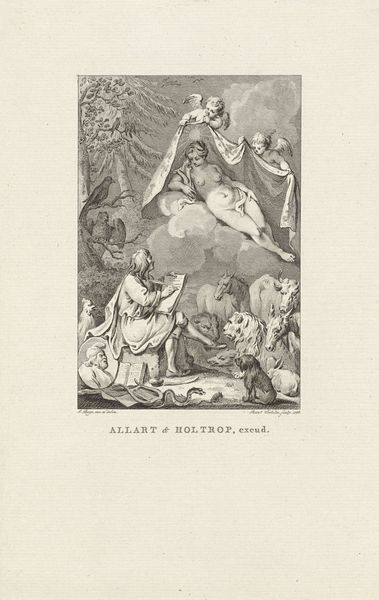
Dimensions: height 250 mm, width 164 mm
Copyright: Rijks Museum: Open Domain
Curator: Here we have "Joden vluchten uit een brandend huis," or "Jews Fleeing a Burning House," an engraving on paper created in 1784 by Cornelis Bogerts. It's part of the collection at the Rijksmuseum. What are your initial impressions? Editor: Chaos. My eye is immediately drawn to the stark contrast of light and dark – the frenzied figures are highlighted against the raging fire, which in turn is emphasized by the stormy sky. The diagonal composition intensifies the feeling of panic and instability. Curator: Absolutely. This print provides insight into a complex moment in history, one where the Jewish community faced intense persecution. Images like this, circulated through print, played a critical role in shaping public opinion. Who is being centered and who is being scapegoated is the central element here. Editor: Yes, there’s a strong Baroque influence in the dramatic lighting and emotive figures. Observe how the artist employs line to convey the terror and urgency of the scene. Note the textural differences—from the smooth skin of the fleeing figures to the jagged, uncontrolled lines depicting the fire. Curator: The composition definitely speaks to larger historical trends and patterns of religious persecution in 18th-century Europe, which were a period where Jewish populations were targeted with expulsion and violence based on prejudice and false accusations. It would be important to consider, who commissioned the work? Editor: Considering that, this piece uses an economy of means to communicate so much narrative and emotion, Bogerts uses the basic elements of art—line, form, contrast—to create a really strong feeling. The technical skill of the engraving enhances the viewing experience and reinforces the horror. Curator: Reflecting on the social context of this engraving, its power rests not only in the artistic choices, but also in its potential to provoke dialogue around displacement, resilience, and social responsibility. Editor: Indeed. Through a careful analysis of the composition and formal qualities, this work reveals the visual language of crisis, providing the audience with a potent view on historical narratives of the time.
Comments
No comments
Be the first to comment and join the conversation on the ultimate creative platform.
